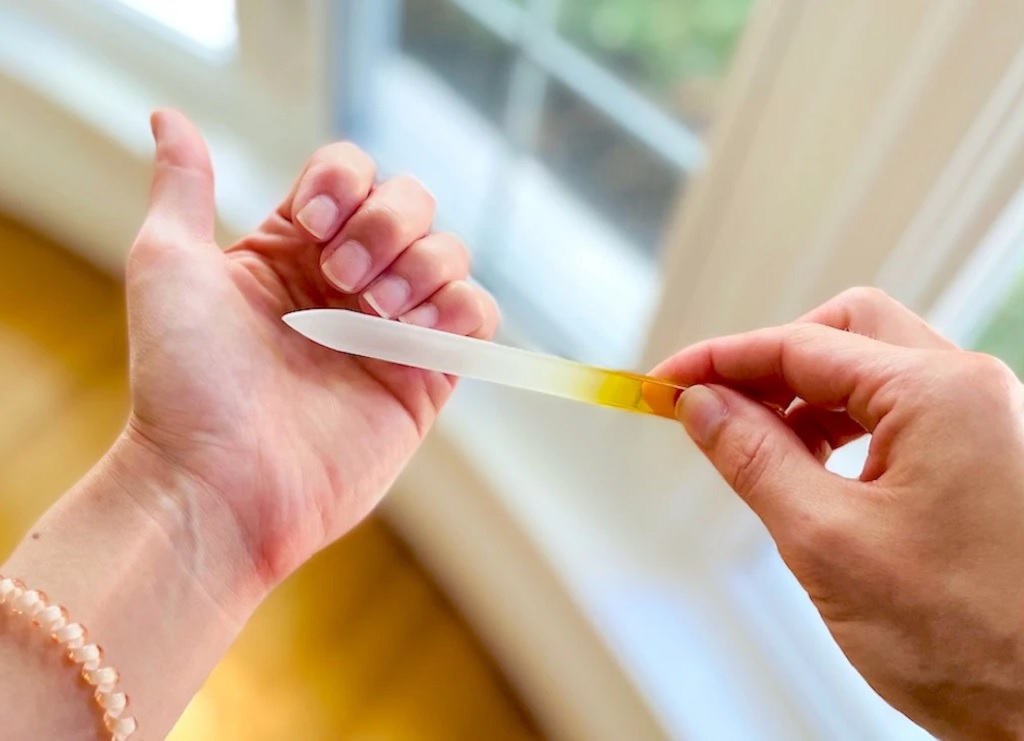Maintaining well-groomed nails is an essential part of personal care and hygiene. Whether you visit a salon or prefer to do your nails at home, having the right tools is crucial. When it comes to nail care, two popular options are the emery board and the nail file. But which one is better for your nails? Let’s compare the emery board and the nail file to help you make an informed decision.

What is Emery Boards?
Emery boards are small, flat tools used for filing and shaping nails. They are typically rectangular in shape and made from a thin, flexible strip of cardboard or wood that is coated with abrasive materials such as emery or sandpaper. The abrasive surface allows for gentle and precise filing of the nails, helping to smooth rough edges, shape the nail tips, and remove any snags or irregularities.
Emery boards are inexpensive and widely available at drugstores, beauty supply stores, and supermarkets. They are a convenient tool for maintaining and grooming nails at home or during professional nail treatments.
What is Nail File?
Nail files are usually made from metal, glass, or crystal. They feature a textured surface with a fine or coarse grit, depending on the desired level of abrasiveness. Nail files are durable, long-lasting, and can be sanitized easily, making them a popular choice in professional salons. They come in various shapes, sizes, and grits, each designed for different purposes and nail types.
What Is the Difference Between Emery Board and Nail File?
A nail file and an emery board are both tools used for shaping and smoothing the nails. While they serve the same purpose, there are some differences between the two:
Material: A nail file can be made from various materials such as metal, glass, or crystal. On the other hand, an emery board is typically made from a wooden core that is coated with an abrasive material called emery.
Texture: Nail files often have a finer texture compared to emery boards. They are available in different grits, ranging from coarse to fine, allowing for different levels of abrasiveness. Emery boards, on the other hand, usually have a medium texture.
Shape and Size: Nail files come in various shapes and sizes, such as flat, curved, or angled, to accommodate different nail shapes and preferences. Emery boards are typically rectangular or slightly tapered, making them easier to hold and use.
Versatility: Nail files are generally more versatile than emery boards. They can be used for shaping, filing, and buffing the nails. Some nail files may also have a buffing surface on one side. Emery boards, however, are primarily used for shaping and smoothing the edges of the nails.
Portability: Emery boards are often more compact and lightweight compared to nail files. They are commonly found in travel-sized nail care kits and are convenient to carry in a purse or a travel bag. Nail files, depending on their material, can be bulkier and may require more care during transportation.
Ultimately, the choice between a nail file and an emery board depends on personal preference and the desired outcome. Nail files offer more options in terms of grit and functionality, while emery boards are compact and convenient for basic nail shaping.
Should You Choose a Nail File or an Emery Boards?
In general, nail files are often preferred for more precise shaping, especially when dealing with artificial nails or specific nail enhancements. Emery boards, on the other hand, are commonly used for regular nail maintenance and quick touch-ups.
Ultimately, the choice between a nail file and an emery board comes down to personal preference. It’s a good idea to have both tools available, as they serve different purposes and can be used interchangeably based on your needs and preferences.
Conclusion
Both tools have their advantages and can be used in combination to achieve optimal nail care. Whichever you choose, regular maintenance, proper filing techniques, and moisturizing your nails and cuticles are key to keeping your nails healthy, strong, and beautiful.